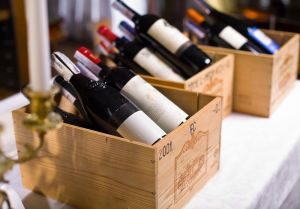The ability to interpret a wine label is an important skill in order to be able to buy a decent bottle of vino at a good price. Labels are regulated by the Alcohol and Tobacco Tax and Trade Bureau of the U.S. Treasury Department and because the industry is strictly regulated, the labels can be relied upon to give you the information needed to make a good selection for any occasion or gift.
If you are shopping for American wines, either the brand name or the producer name is at the top of the label in large or small type. If there is a logo, it will be just above or below the brand. Imported wines, especially French wines, will have the name of the producer or brand at the bottom of the label.
The type or kind, such as Chardonnay, Merlot or Cabernet, will be placed just below the vintage year, if there is a vintage year identified, and below the brand. If there is no year, it is non-vintage or NV, and this reduces the status and hopefully the price. In order to legally state the type of wine on a label, U.S. law requires that at least 75 percent of the grapes are of the named variety.

Below the vintage year and the type or variety of grape, you will find the names of states or counties where the grapes were grown, which must be on the label. The names of states or counties where the grapes were grown are also called the appellations of origin. If the appellation of origin is within the state of California, 100 percent of the grapes must have been grown in California. If the vineyard that produced the grapes is famous for high quality, the name of the vineyard is just below the appellation of origin as well as whether or not the beverage is considered part of a special selection or private reserve. Special qualities such as sweet, dry or fruity may also be on this part of the label.
Underneath the appellation of origin, labels for both domestic and imported product must identify the alcohol content. If the alcohol content is less than 14 percent, the content does not have to be identified by a number, it can be called a table wine, and those words can be on the label instead of the percentage of alcohol content.
Below or next to the alcohol content is the actual amount of liquid stored in the bottle. A standard bottle holds 750 mL, which is about four glasses. If the volume of the bottle is not on the label, it must be blown into the glass, and you can see the number by turning the bottle upside down.